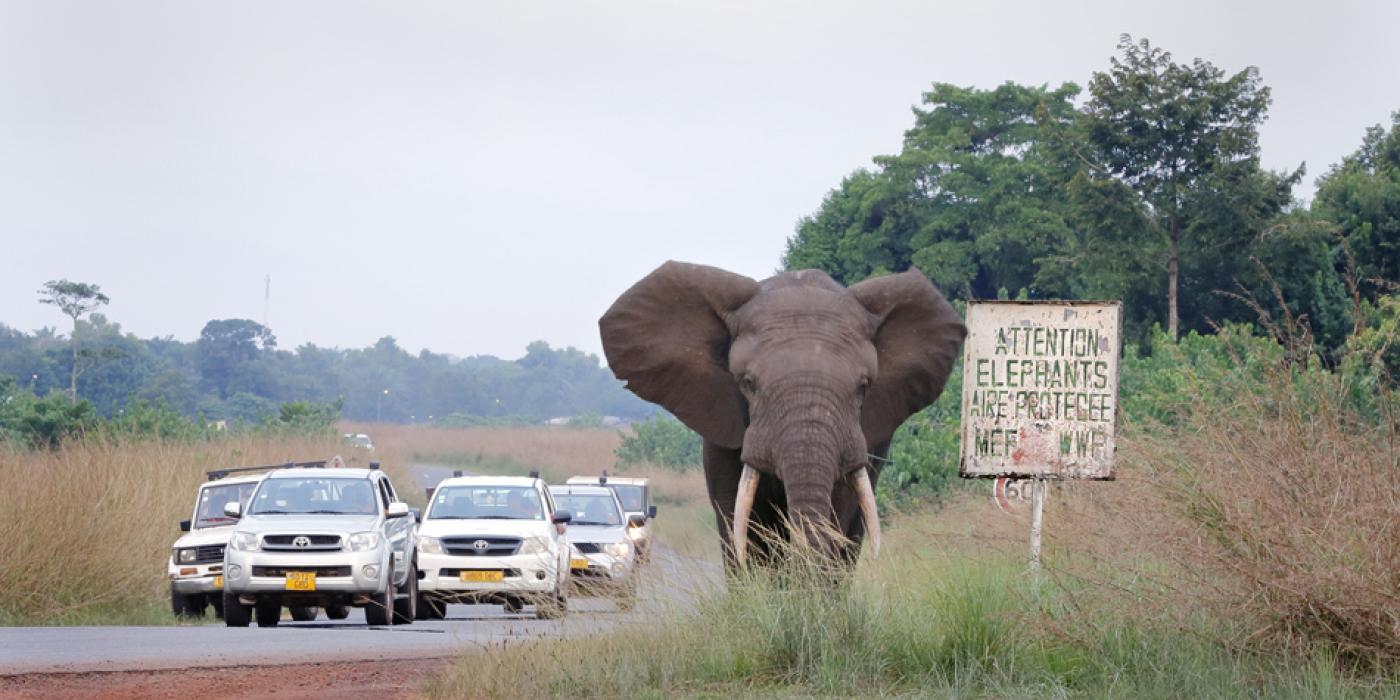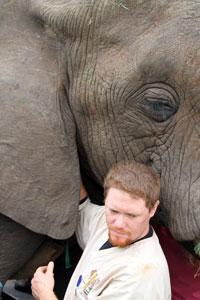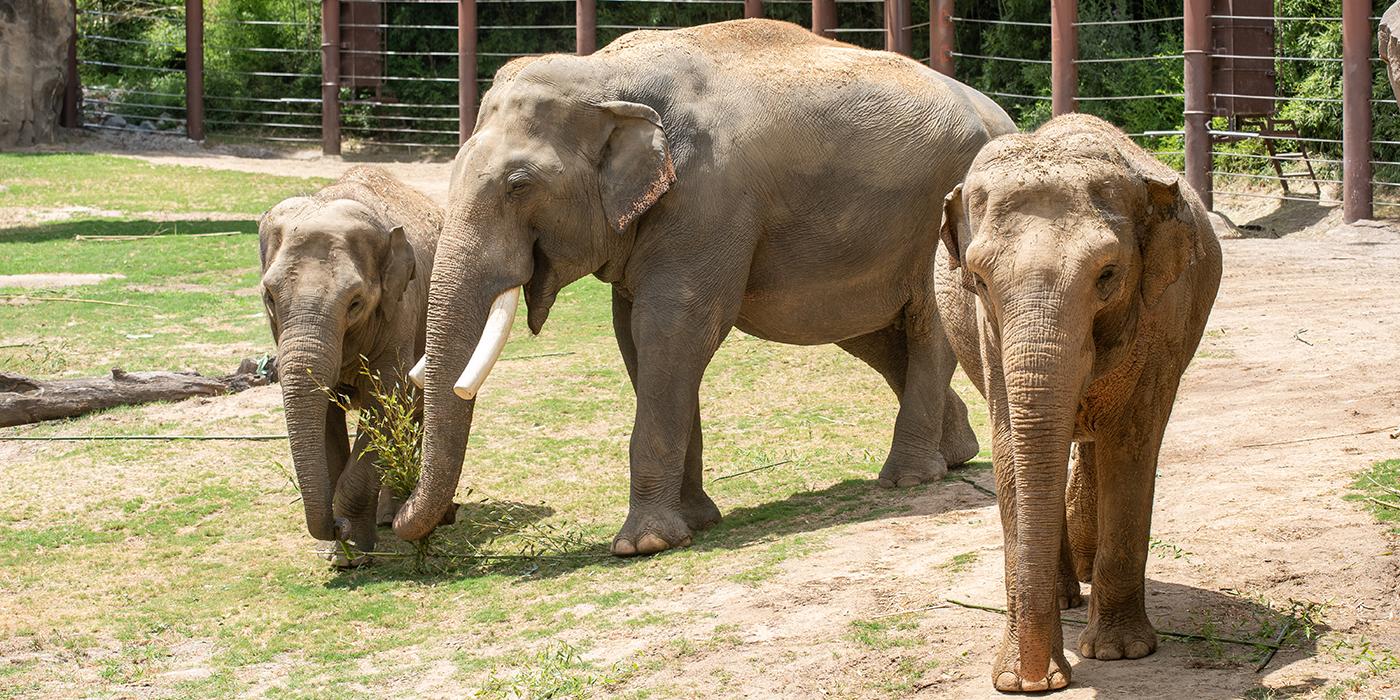Field Surgery on Wild Elephants in South Africa
By Jason Gue, Elephant Keeper at the National Zoo
If you come to the National Zoo on most days you will find us conducting an elephant husbandry demonstration. During the narration we talk about how elephants are endangered and are in constant competition with humans for the use of limited land and resources. How much land do African elephants need to be successful? The answer cannot be measured in acres or miles. The “given” is they need food and water, but they need enough area to allow them to constantly move to new areas with fresh supplies of food and water while previously-visited areas recover from their visits. Knowing this, private land owners of Selati Game Reserve have saved over 30,000 hectares (over 115 square miles) for the sake of elephants and other wildlife, to support and maintain biodiversity and to ensure overall ecosystem health.
A collaboration of land owners founded Selati Game Reserve in South Africa. Collectively pooling their land and managing it as a single unit, their goal is “conserving and enhancing the bio-diversity of the eco-system in order to realize its full economic potential on a sustainable basis.” Selati is home to a wide range of plants and animals. Highlighting their commitment to preserving biodiversity and ecosystem health, Selati maintains a disease-free Cape buffalo breeding program (certified free of foot and mouth disease), a sable antelope breeding program, and a protected area for cycad trees, an extremely endangered plant species. Outside of these protected breeding areas, the animals of Selati range freely within the reserve and include more than 70 elephants.
With a growing population of animals, how do you manage the land? In some cases, animals can be sold or traded. With elephants it becomes difficult. The national parks and reserves in South Africa are quickly reaching the limits of how many elephants the land can successfully maintain. For many such land owners, the options are limited. Limited to four options to be exact: culling (or killing the elephants), translocation, use of a chemical contraceptive for the females, or surgical vasectomies on the males. For Selati, where the elephants are individually named, monitored, and respected, culling was not an option. The owners instead turned to the Elephant Population Management Program to pursue surgical vasectomies.
This past May, I was able to join an international group of veterinarians and support staff in South Africa to vasectomize bull elephants. The concept of elephant vasectomies was conceived and designed by Mark Stetter of Disney’s Animal Kingdom. He quickly recruited the help of Jeff Zuba of San Diego Zoo Global, Dean Hendrickson from the Colorado State University, and Douw Grobler of CatchCo (a South African wildlife capture specialist). Since 2003, the team has grown dramatically, as the laparoscopic and anesthetic techniques used during the surgery have advanced.
My role in this project was to join the anesthesia team to learn how to handle an immobilized elephant. The anesthesia team includes Jeff Zuba of San Diego Zoo Global, Deena Brenner from the Denver Zoo, and Jessica Siegal-Willott from the Smithsonian Conservation Biology Institute. South African participants on the anesthesia team include several veterinarians and veterinary technicians from the Faculty of Veterinary Science of the University of Pretoria, and the South African National Zoo in Pretoria.
Our days start early. By the time the sun rises all of the trucks are packed and loaded with gear, and the helicopter is in the air looking for the first elephant of the day. We base bull selection on dominance status and breeding history, with the most dominant breeding bulls the first to be vasectomized. The helicopters allow the veterinarians to get close enough to the target bull for darting but still remain safe. It also allows the vets to move in quickly to dart, then move away quickly to minimize stress on the elephant while keeping an eye on it after it has been given the immobilization drugs.
Once we hear the radio call come in from the helicopter that it is safe to approach, the convoy of trucks and equipment move in to the anesthetized elephant. It takes a few minutes for the elephant to be fully anesthetized. Once the elephant has been anesthetized, the team moves in. Dr. Siegal-Willott and Dr. Brenner collect initial blood samples and place catheters to administer drugs that will keep the elephant asleep and pain-free throughout the surgery. I place a mouth strap in the elephant’s mouth and pull the mouth open so Dr. Zuba can place the endotracheal tube to give supplemental oxygen and help inflate the lungs throughout the surgery. Now that the elephant is stabilized, a crane truck is used to place the elephant into position. We feed round slings around each leg and then attach lifting straps around the feet. The elephant is lifted up into the air by his feet placing him upside down. The round slings are adjusted into position, and pulled to one side of the body, and then he’s lowered back to the ground. Once down, the lifting straps from the feet are attached to the round slings and the elephant is lifted back into the air in an upright position. With another strap, we lift his head to keep the neck straight and help ensure an open airway.
Now that the elephant is in the surgical position, we place equipment and start monitoring his vital signs: arterial blood pressure, blood oxygen saturation, respiration, heart rate, and rectal temperature. We continue to collect blood samples throughout the procedure to monitor the elephant’s acid-base status. Essentially, everything a hospital would monitor on you during surgery, we are monitoring on the elephant. We closely watch the elephant throughout the two-hour procedure, with the overall goal of returning him to his normal life in the same physical state as before the immobilization—just missing a couple of small pieces.
After a very successful first surgery, we return to camp. After all of the gear has been cleaned and prepared for the next day, we debrief the day’s events over dinner. This first day was largely to familiarize everyone with their roles and responsibilities, and to get a sense of the time, energy, and logistics needed to vasectomize 14 bulls over the next two weeks. Over the next few days, the anesthesia and surgery teams performed amazingly well together. Not only did we complete our goal of vasectomizing 14 bulls—but we did it in only six days! Over the past few years, the Elephant Population Management Program has successfully trained the South African colleagues to perform these procedures. This collaboration will help minimize the costs of the procedure, allowing the Elephant Population Management Program to better utilize its resources to save more elephants throughout the region.
On my flight back to DC, I contemplated our own Elephant Trails exhibit as it nears completion. In addition to housing one of the oldest captive Asian elephants in North America, we hope to house a larger number of elephants. This means that our ability to handle all potential emergencies will only grow. This trip provided valuable experience that will help us better care for our elephants in the future.
I would like to thank the board of directors of the Elephant Population Management Program for allowing me to join their team this year. It makes our entire elephant staff and elephant program stronger as we build into a multi-generational breeding herd.
This story was originally published in Between the Lions, Friends of the National Zoo’s volunteer newsletter.
Related Species:





